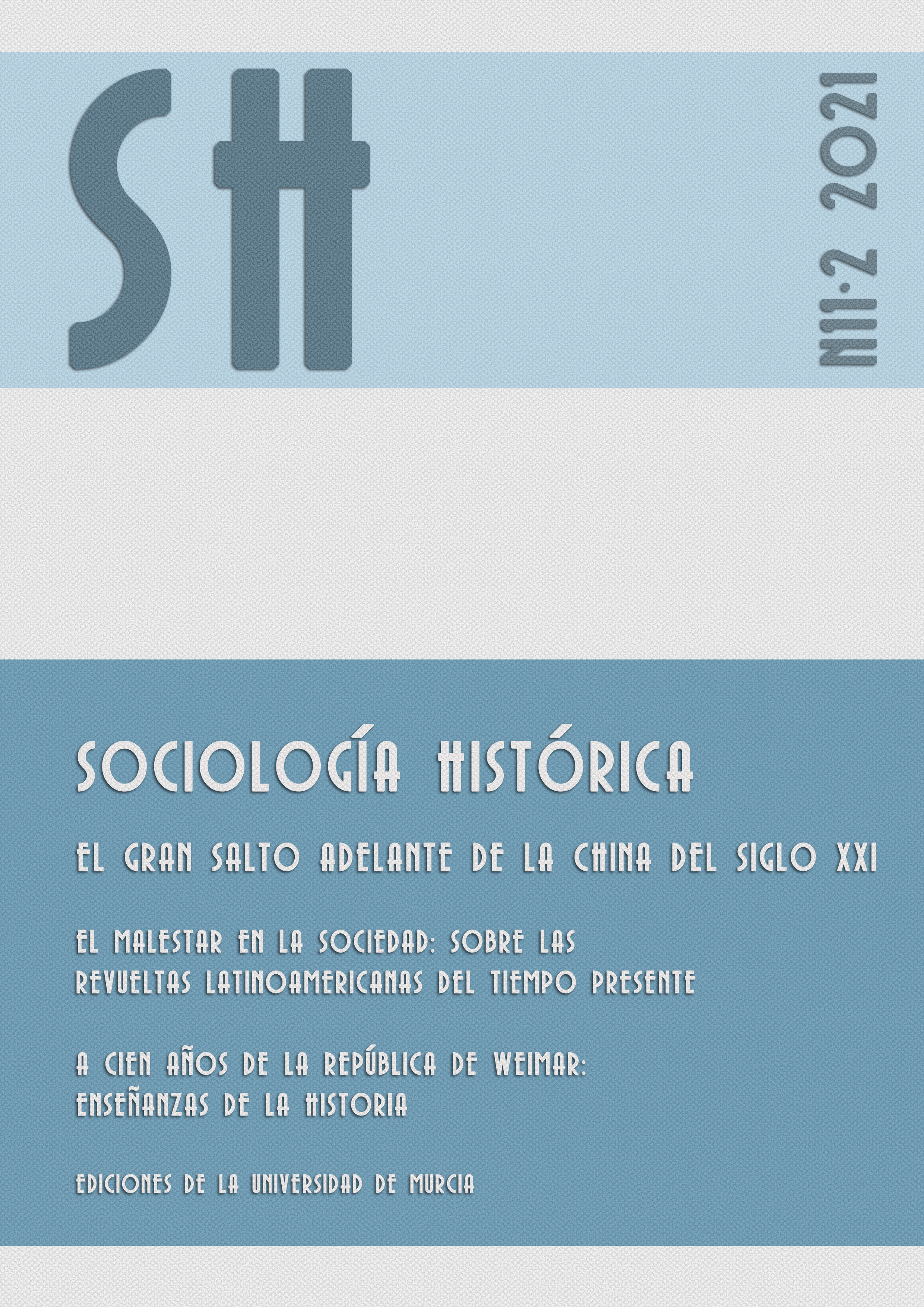Turning Left: Student-Worker Alliance in Labor Struggles in China
Abstract
The Shenzhen Jasic struggle of 2018-2019 signals a turning point in migrant labor struggles in China since the mid-1990s, and it explicitly demonstrates a shift toward left politics, departing from a civil society framework which barely analyzes ideology and class politics, thus showing little potential to overcome class inequality. The Jasic struggle's key characteristic of student-worker unity compels us to revisit Marxism and Maoism in understanding today’s emancipatory politics and labor movements. This revisiting of Marxist Maoism is attempted on three layers: a return to class politics; a return to communism; and a return to Mao’s mass line. These three “returns” are not retrospective politics romanticizing the past. Instead, they draw upon historical experiences, cultural resources and communist legacies to fight for a more egalitarian society in the future.
Downloads
-
Abstract326
-
pdf (Español (España))299
References
BIELER, A. (2014). ‘Transnational labour solidarity in (the) crisis’, Global Labour Journal, 5(2), 114-133.
CARTER, B. (2016). ‘Trade union organizing and renewal’, Work, Employment & Society, 20 (2), 415-26.
CHAN, J. (2019). ‘Jasic workers fight for union rights’, New Politics, 84-89.
CHAN, J. (2020). ‘A Precarious worker-student alliance in Xi’s China’, China Review, 20(1), 165-190.
CHAN, C. K. C., & Hui, E. S. I. (2017). ‘Bringing class struggles back: A Marxian analysis of the state and class relations in China’, Globalizations, 14(2), 232-244.
ENGEMAN, C. (2014). ‘Social movement unionism in practice: organizational
dimensions of union mobilization in the Los Angeles immigrant rights marches’, Work, Employment & Society, 29 (3), 444-61.
FRIEDMAN, E. (2014). Insurgency Trap: Labor Politics in Postsocialist China, Cornell University Press.
GROTE, J. R., & Wagemann, C. (2018). Social Movements and Organized Labour: Passions and Interests, Routledge.
Jörg NOWAK, Madhumita DUTTA y Peter BIRKE (2018). Workers’ Movements and Strikes in the Twenty-First Century, Londres, Rowman & Littlefield.
HYMAN, R. (2004). ‘Union renewal: a view from Europe’, Labor History, 45(3), 333- 82.
KARL, R. E. (2010). Mao Zedong and China in the Twentieth-Century World: A Concise History, Duke University Press.
KARL, R. E. (2020). ‘Forum Commentary’, Dialectical Anthropology, 44, 345–347.
PERRY, E. (2012). Anyuan: Mining China’s Revolutionary Tradition, California, University of California Press.
PUN, N. (2019). ‘The new Chinese working class in struggle’, Dialectical Anthropology, (publicado online doi.org/10.1007/s10624-019-09559-0)
PUN, N. (2016). ‘Chinese communism revisited: still a class perspective, but why?”, en Lee, A. T. G., & Zizek, S. (Eds.). The Idea of Communism, 3, The Seoul Conference [La idea de comunismo, Akal, 2013], Verso Books.
PUN, N., et al. (2014). ‘Worker–intellectual unity: Trans-border sociologicalintervention in Foxconn’, Current Sociology, 62(2), 209-223.
SMITH, C. and PUN, N. (2018). ‘Precarity and class in China: An unhappy coupling’, Work, Employment and Society, 32 (3), 599-615.
STARRS, S. (2013). ‘American economic power hasn't declined — It globalized!Summoning the data and taking globalization seriously’, International Studies Quarterly, 57(4), 817-830.
RUSSO, A. (2020). Cultural Revolution and Revolutionary Culture, Duke University Press.
SCHRAM, S. (1971). ‘Mao Tse-tung and the theory of the permanent revolution 1958-69, The China Quarterly,(46), 221-244.
PRINGLE, T., & CHAN, A. (2018). ‘China’s labour relations have entered a dangerous new phase, as shown by attacks on Jasic workers and activists’, South China Morning Post, 18.
TOURAINE, A., GSICKA, G., & DENBY, D. (1983). Solidarity: The analysis of a social movement: Poland, 1980-1981, Cambridge, Cambridge University Press.

This work is licensed under a Creative Commons Attribution-NonCommercial-NoDerivatives 4.0 International License.
Las obras que se publican en esta revista están sujetas a los siguientes términos:
1. El Servicio de Publicaciones de la Universidad de Murcia (la editorial) conserva los derechos patrimoniales (copyright) de las obras publicadas, y favorece y permite la reutilización de las mismas bajo la licencia de uso indicada en el punto 2.
2. Las obras se publican en la edición electrónica de la revista bajo una licencia Creative Commons Reconocimiento-NoComercial-SinObraDerivada 4.0 España (texto legal). Se pueden copiar, usar, difundir, transmitir y exponer públicamente, siempre que: i) se cite la autoría y la fuente original de su publicación (revista, editorial y URL de la obra); ii) no se usen para fines comerciales; iii) se mencione la existencia y especificaciones de esta licencia de uso.
3. Condiciones de auto-archivo. Se permite y se anima a los autores a difundir electrónicamente las versiones pre-print (versión antes de ser evaluada) y/o post-print (versión evaluada y aceptada para su publicación) de sus obras antes de su publicación, ya que favorece su circulación y difusión más temprana y con ello un posible aumento en su citación y alcance entre la comunidad académica. Color RoMEO: verde.










